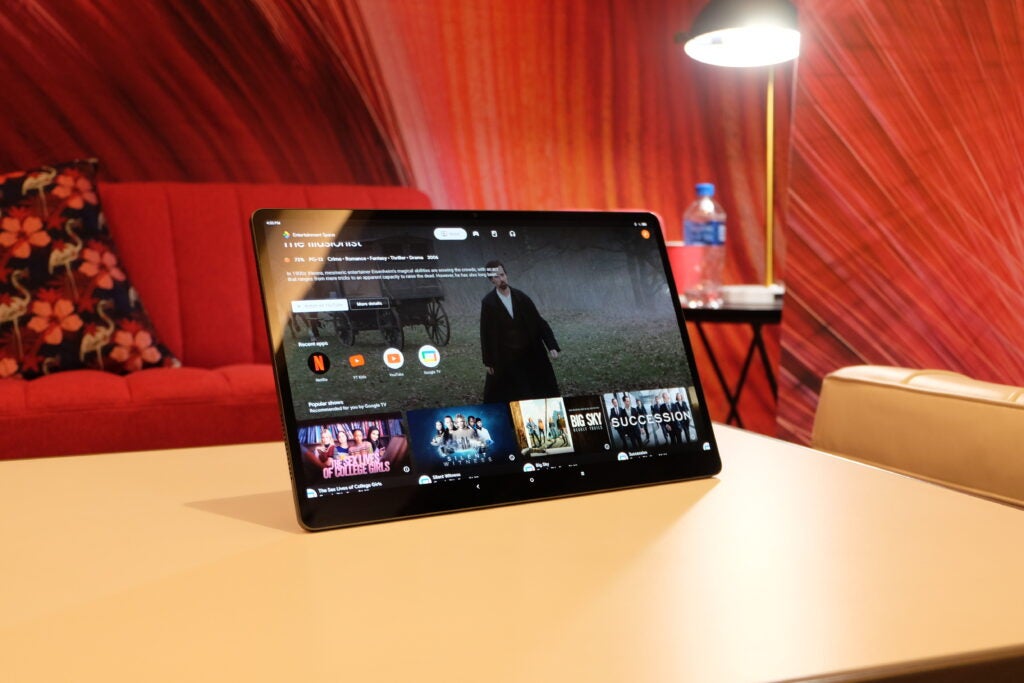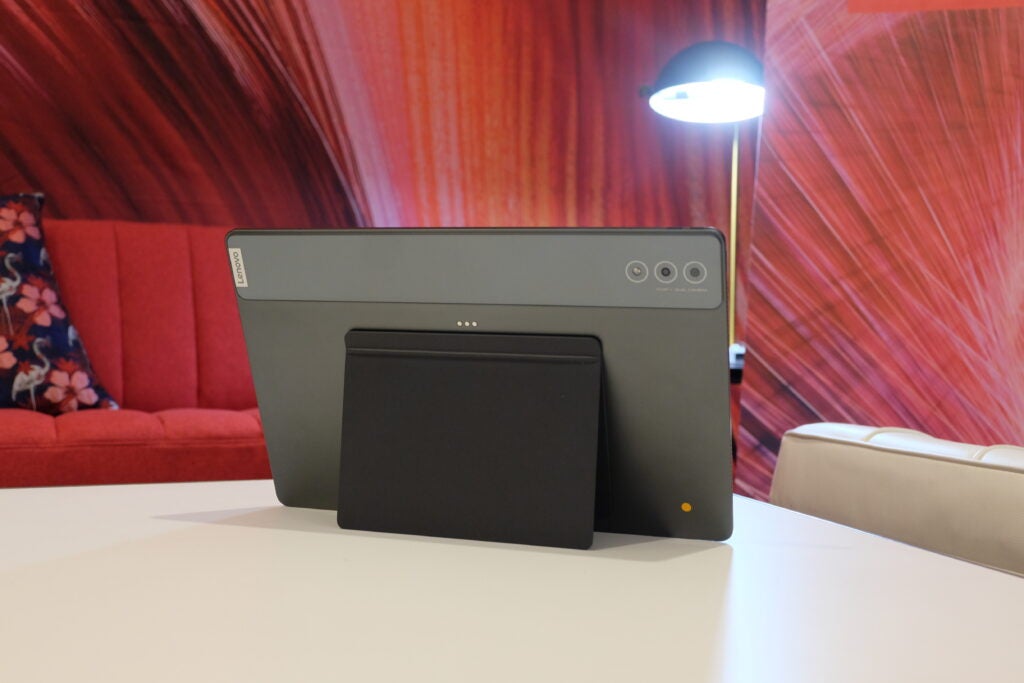Forget Ultra, this Lenovo Tab is Extreme and it comes packing some seriously high-end features. Here’s our first look from CES 2023.
-
Can be used as a secondary monitorDisplay Port input allows you to connect up other devices -
High-end specsHuge OLED display, fast chipset and big battery
Introduction
Launched alongside the modest e-ink Smart Paper at CES, the Tab Extreme sits at very much the opposite end of Lenovo’s tablet range for 2023.
As the Extreme part of the name suggests, this is a tablet focused on high-end performance and features. It’s one of the few Android tablets on the market with such striking specs and a vast array of features.
If you’ve been looking for an iPad Pro-like device running Android, the Lenovo Tab Extreme could very well be for you and I got some time with it ahead of CES 2023.
Screen and Design
- Huge 14.5-inch display
- OLED screen tech
- It’s a big tablet, but it remains thin
The Lenovo Tab Extreme lives up to its lofty name with its feature-packed display. There’s a 14.5-inch OLED panel covering the front – and it’s very impressive for a tablet. Like any good tablet, there’s a 120Hz refresh rate but there’s also Dolby Vision HDR support, a sharp 3000 x 1876 resolution and P3 colour gamut coverage.
I only had about an hour with the tablet but that was enough time to be thoroughly impressed by the display. The OLED panel leaves blacks inky perfect, while the sheer size of its makes watching a video immersive.

One of my favourite features of this display though is that it can be used as a secondary monitor for pretty much anything thanks to the Display Port connector on the side. You could plug in a laptop if you want to extend a workspace. Having a massive secondary monitor, and one that also acts as its own device is such a smart move and helps set the Extreme apart from other big tablets like the Galaxy Tab S8 Ultra.
The rear of the tablet has a simple two-tone style, one part is shiny and the other matte. It’s a sleek, professional device that weighs 740g and is a mere 5.85mm thick. It’s big – you’re never going to get a small tablet with a 14-inch screen – but it’s not cumbersome.

Sold alongside the tablet is both a pen and a folio keyboard (Tab Extreme Keyboard) case that lifts up the device in a similar way to the iPad Pro’s Magic Keyboard. A back portion of the folio keyboard can be removed, allowing it to be used independently as a kickstand when you’re watching a film. This is another clever addition I really like.
Performance
- Runs on a Mediatek chipset
- Plenty of storage and RAM
- Fast charging
Powering the Lenovo Tab Extreme is a Mediatek Dimensity 9000 chipset that’s paired with 12GB RAM and 256GB onboard storage, though that can be upped by a further 1TB with a microSD card.
Wi-Fi 6E is onboard, as is Bluetooth 5.3 and a 12300mAh battery with 68w fast charge. There’s even reverse wireless charging, allowing you to charge basically anything that supports the Qi standard.
This should be a top performer with plenty of future proofing. I didn’t spend enough time with the tablet to properly judge performance – you’ll get the full in-depth review when we get this tablet in for review – nor was I able to run any benchmarking software.

An issue that tends to plague Android tablets, especially those with large screens, is software.
Lenovo has certainly tried to spruce up the basic big-screen Android UI, with a slightly more PC look but it still doesn’t feel overly natural to use. There’s nothing Lenovo can do about the lack of really good third-party on Android though and they mostly pale in comparison to what’s available on the iPad.
Initial Verdict
With a massive high-res OLED screen, clever features like the secondary monitor input and plenty of internal power, the Lenovo Tab Extreme certainly looks, upon first inspection, like it’s going to live up to its name.
Jargon buster
OLED
Organic Light Emitting Diode is panel technology that allows each individual pixel to produce light rather than relying on a backlight. This enables the screen to accurately display blacks by turning off the pixel, resulting in improved contrast compared to conventional LCD panels.
















